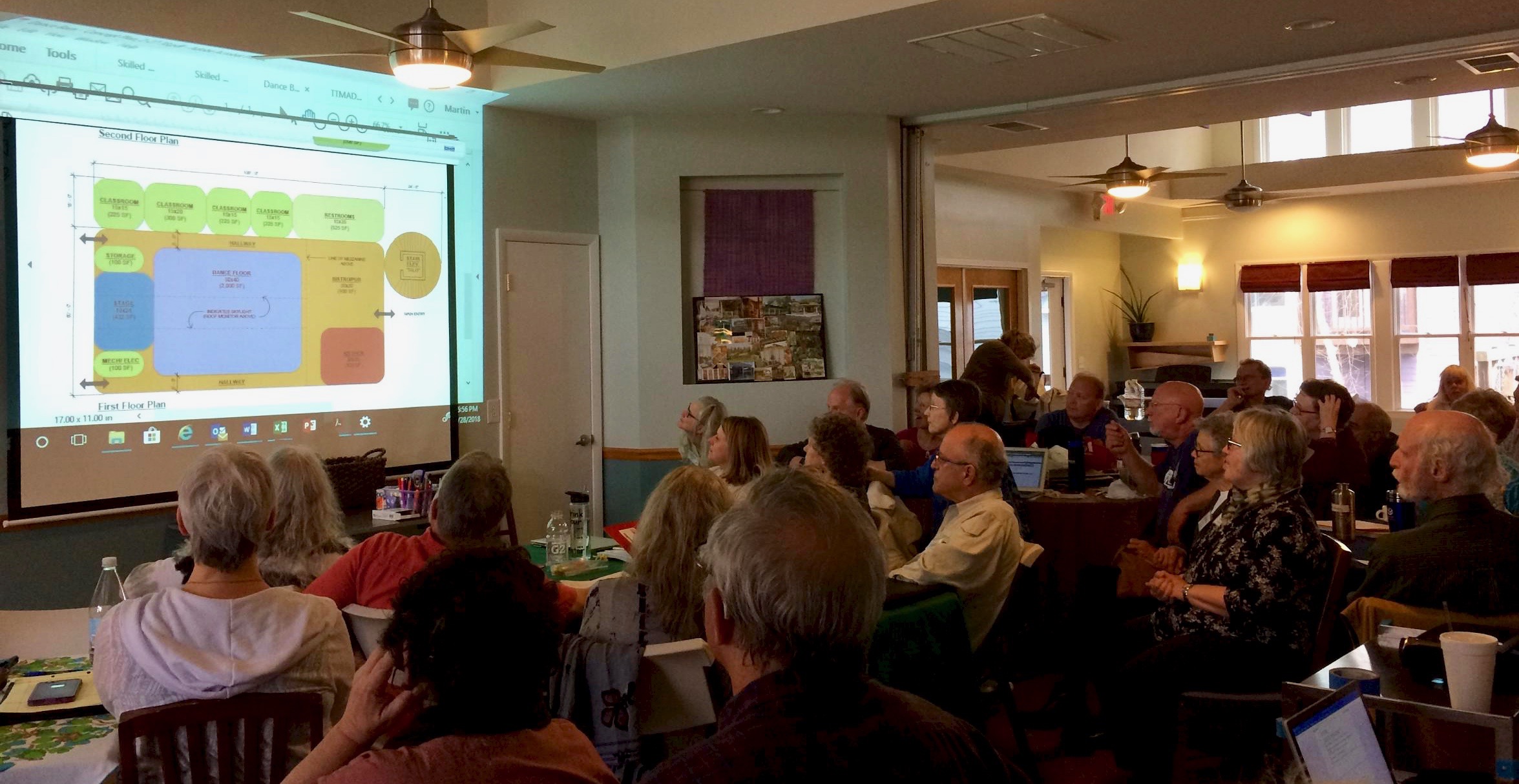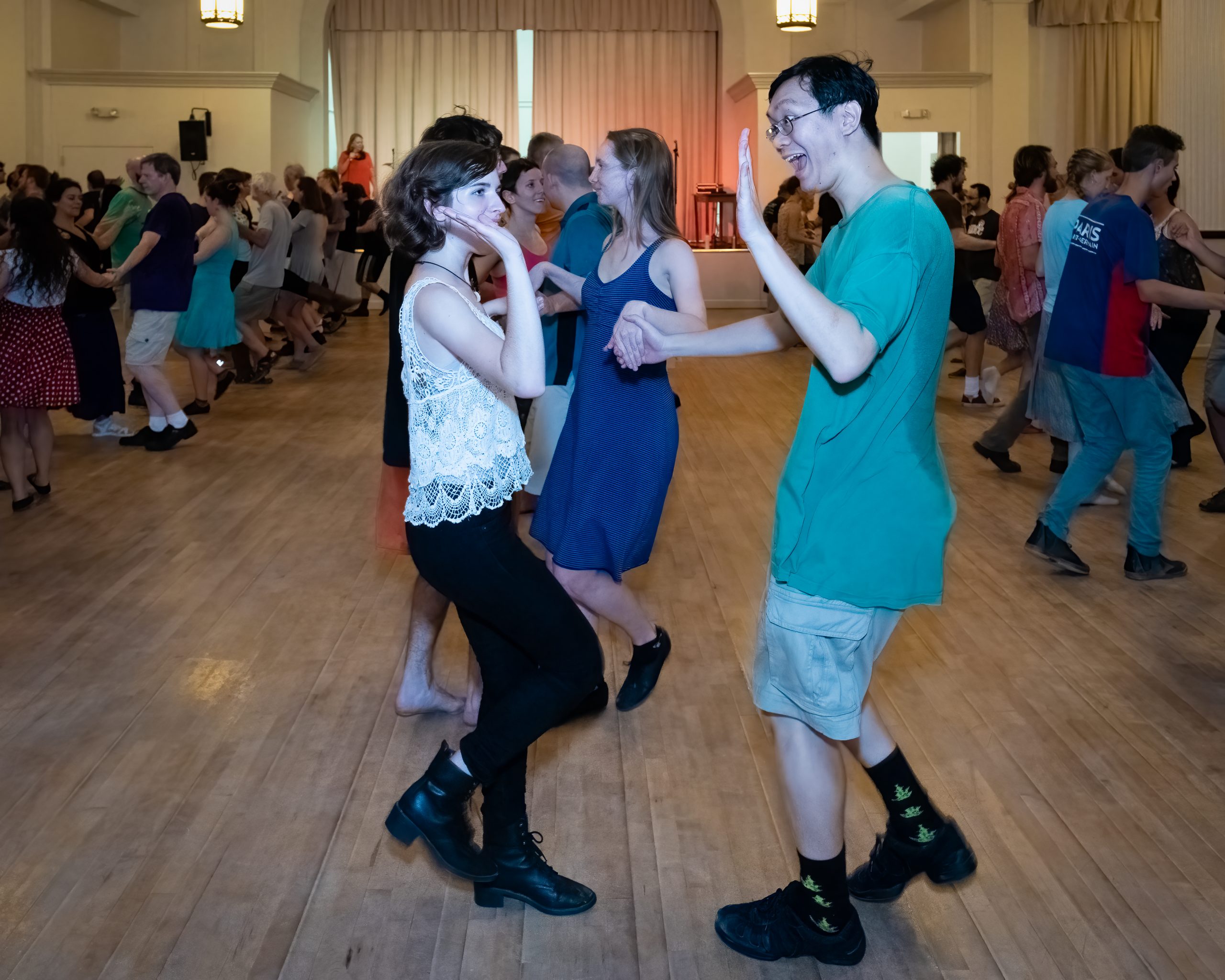
A New Community The Triangle Traditional Music and Dance Retirement Society (TTMADRS or 2T ) is developing a multigenerational, intentional community that will be located in the Triangle area of North Carolina. The community will integrate elements of co-housing and life-plan/CCRC communities to create an inclusive, socially permeable, and playful arts village that includes continuing care for older adults.
We plan to include a continuum of housing and healthcare using some of the Household Model principles developed by Action Pact. This model commits to meeting residents’ needs through the end of life, offering a combination of privacy, community, and organized support. More on the Household Model below.
Our key community priorities:
- We want to stay together and play together through old age.
- We want to continue to practice our arts, enjoy our pleasures, engage with the world, and be useful until we take our last breath.
- We want innovative healthcare that is resident-directed, not institutional, and incorporates emerging, technology-based homecare.

Spaces & Concepts that are core to our goals and priorities:
Spaces
- Individual homes, townhomes, and apartments situated in an accessible, natural setting designed to intrinsically accommodate the latest telehealth and hospital-at-home infrastructure and technology.
- A licensed Family Care Home (FCH) for those who need more hands-on support and care. See more about the FCH below.
- A community center for participatory arts, such as music and dance, that is welcoming to the surrounding community that includes:
- Dance hall/auditorium
- Practice, teaching, and studio spaces for arts, crafts, and music
- Wellness center with an outpatient clinic
- Library & media center
- Accessible gardens and green spaces.
- Pub, café, and/or other dining venues.
- Other possible amenities over time:
- Swimming pool
- Visitor housing/camping
Family Care Home We intend to build one licensed Family Care Home (FCH) initially and a second one as the community grows. The design will be fully accessible with substantial internet technology in a six-bed home following principles of the Household Model (Household Model — Action Pact). The FCH may be used by community residents on a fee-for-service basis in conjunction with personal resources or Long-term Care Insurance. Stays will be varied, depending on the need for intermittent periods of recovery, rehabilitation, and/or end-of-life care.
To achieve our goals for delivery of healthcare within our community, we plan to apply the principles of the Household Model and make use of the latest tele-health technology and "hospital at home" programs. This household model and technology will be fully integrated into both the individual homes and the Family Care home.
Key Community Care Concepts
We are planning for the period of life when we slow down and need progressively more assistance and care. Realization of our priorities is based on integration of the philosophy and principles of the Household Model and use of emerging telehealth hospital-at-home applications to manage and run housing and healthcare spaces. Application of this model of care relies on various other components from within and beyond our community, including but not limited to Care Teams, the FCH, and hospice services. We envision prioritizing a high level of compassionate care in a personalized atmosphere. This arrangement will enable us to continue to honor our own version of aging with the same types of choices and pursuits that we have enjoyed at other times in our lives, while also attending to our changing abilities with dignity and quality care.
Household Model The prominent core values of the Household Model endorse a person-centered culture that prioritizes interpersonal relationships, a physical environment that maximizes quality of life, and an organizational structure that meets the needs of community residents and staff. This personalized care will be available either in a person’s home or in a Family Care Home (FCH) located in the TTMADRS community. The Household Model of care promotes compassionate, skilled, and non-institutional residential living for those community members who need more personal support and/or nursing care. The FCH features private and semi-private bedrooms and has common space in the form of a kitchen, living room, and dining room. Two additional concepts are essential to the Household Model: 1) typical activities of daily life with flexibility and customized activities and 2) a small, dedicated staff that is self-led and cross-trained. Household residents and staff have input into decision-making. This design provides as much autonomy as is safe for individual residents, including maximum choice about when to get up, bathe, and go to bed as well as what and when to eat. This design offers an atmosphere of safety with spontaneity and creativity. Quality of care and quality of life are of the highest priority in the TTMADRS community.
Learn more at Household Model — Action Pact.
Health Care We need a combination of options as we age to provide the continuum of health care that people might need. Medical care might involve in-office visits, the use of a community-based medical clinic, and/or use of sophisticated telehealth services. This combination of health care increases the likelihood of remaining at home. We envision staying in our own homes as long as possible, moving to the FCH short- or long-term care if necessary, with support from volunteer community members (Care Teams), telehealth and/or hospice services in either location.
Hospital systems and insurance companies are collaborating on a strategy for allowing hospitalized individuals to return home more quickly with remote monitoring and support. The general goals of this approach are to reduce typical hospital time, to sustain high quality of care, and to provide the necessary oversight in an environment that is either at home or in a supervised setting like the FCH. Use of these strategies and technologies in combination with hospice services can support compassionate end-of-life care in a home environment.
If you are still curious, please watch these two short videos that describe the ways these services are being provided:
How Medically Home's hospital-at-home-works
UNC Health Advanced-Care-At-Home